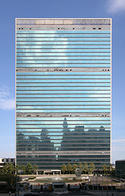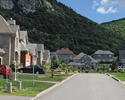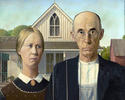As the United States sees its politics and economic systems become increasingly nationalized, pundits and professors have a tendency to highlight our different regions—and the unique histories and subcultures that are inherent to them—to explain our differences in terms besides “red vs. blue” or “right vs. read more »
Health
We Don't Have to Politicize Every Aspect of the Pandemic
- Login to post comments
Restart, Reset, Retool, Refill
Considerations for downtowns, commercial corridors, and main streets
We are at the end of the beginning. There are going to be closures, vacancies, and job losses across communities. How long and how deep will be a function of how well the next three-to-six months are managed read more »
- Login to post comments
Does COVID-19 Spell the End of Big Cities? Munk Debates, with guests Joel Kotkin and Richard Florida
Be it resolved, COVID-19 and its social and economic fall out spells the end of the big city boom.
Listen to the debate at Munk Debates.
About this episode read more »
- Login to post comments
COVID-19: Improved Ventilation Required in Crowded Enclosures
The New York Times reported on July 4 that 239 scientists in 32 countries had signed an Open Letter to the World Health Organization (WHO) outlining “the evidence showing that smaller particles can infect people, and are calling for the agency to revise its recommendations.” The letter was published in the journal read more »
- Login to post comments
Social Bonds are Fraying Fast in America's Cities
The evening cheers in support of health care workers during the worst of New York’s coronavirus outbreak were a rare bright spot in a day full of depressing developments. read more »
- Login to post comments
Face Panties
Some years ago I was enjoying another visit to Japan when I noticed ordinary people wearing face masks. It wasn’t everyone. And it wasn’t all the time. But it was common enough that no one seemed to notice or care. read more »
- Login to post comments
Combined Statistical Areas: Ready for the Dispersion Demand
The years to come seem likely to see America’s historic population dispersion continue or accelerate, as pandemic and lockdown worries have severely reduced the attractiveness of dense urban cores (especially in the highest density areas, such as New York City). As a result, the sparsely populated outer areas of combined statistical areas (CSAs), the largest category of local labor market defined by the Office of Management and Budget (OMB), could be the destination of many former urban core households. read more »
- Login to post comments
Perspective: U. S. COVID-19 Deaths and Urban Population Density
There is wide consensus that the COVID-19 virus spreads person-to-person, especially in confined spaces that are insufficiently ventilated. It is exacerbated by prolonged proximity, which John Brooks, the Centers for Disease Control and Prevention’s chief medical officer indicates is 15 minutes or more of unprotected contact with someone less than 6 feet away. read more »
- Login to post comments
How the Virus Is Pushing America Toward a Better Future
Pessimism is the mood of the day, with 80 percent of Americans saying the country is generally out of control. Even before civil unrest and pestilence, most Americans believed our country was in decline, Pew reported, with a shrinking middle class, increased indebtedness and growing polarization. read more »
The Urban Project: Urbanization, Urbanisms, and the Virus – A Historical Take
Observing and writing 20-some years before the oil embargo (1974) and 30 years before the stern Brundtland report (1987), Jane Jacobs (1961) resolved that density comes in “good” and “bad” varieties. read more »
- Login to post comments






















